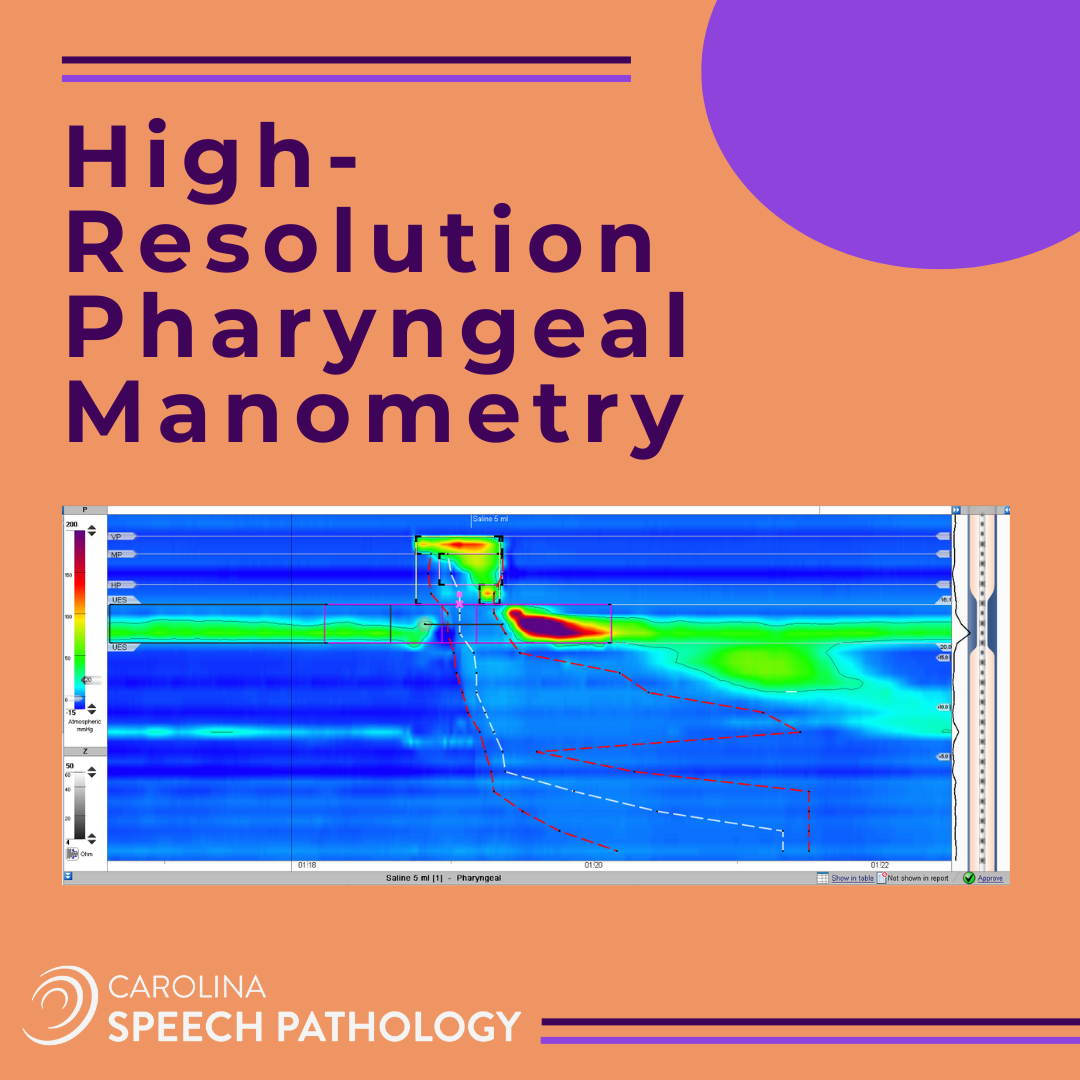High-resolution esophageal manometry has been utilized as a diagnostic tool to examine the pressure within the esophagus for patients presenting with a possible esophageal motility disorder. It involves inserting a catheter with 36 pressure sensors spaced one centimeter apart through the nose all the down through the lower esophageal sphincter (LES). It is left in place for a baseline reading, then the patient is instructed to swallow a handful of water trials and possibly some applesauce. High-resolution pharyngeal manometry has been gaining traction in the speech pathology world in the last decade, not only as a diagnostic tool, but also as a biofeedback tool for dysphagia intervention. Speech-Language Pathologists (SLPs) with proper training can utilize HRPM in their practice.
When HRPM is used as a diagnostic tool, the catheter is inserted based on the facility’s protocol, and baseline pressures are measured in four regions: velopharyngeal port, oropharynx, hypopharynx, and upper esophageal sphincter (UES). Next, pressures are measured with swallowing and the data is presented visually and read by the SLP to describe pharyngeal pressures and upper esophageal sphincter relaxation pressure. Currently, HRPM is used in addition to standard dysphagia imaging tools such as Videofluoroscopic Swallow Study (VFSS) or Flexible Endoscopic Evaluation of Swallowing (FEES) and not as a stand-alone tool for examining dysphagia.
Biofeedback tools have been utilized in dysphagia intervention in the forms of simply watching movements in a mirror or using one’s hand to feel the movement of the thyroid notch to more in-depth biofeedback approaches such as surface electromyography or oral measurement devices such as the Iowa Oral Performance Instrument (IOPI). Recent publications have examined (“utilized” used a lot so removed it from a couple of places) HRPM as a biofeedback tool to enhance accuracy for traditional evidence-based swallowing exercises. The approach is appealing due to the colorful and easy-to-follow visual output (see image below) and shows promise as an effective adjunct to dysphagia intervention.
If you are interested in learning more about how to implement this advanced tool in your practice, consider taking one or both of the following webinars presented by Dr. Ashli O’Rourke.
- The Clinical Utility of HRPM is for speech-language pathologists, laryngologists and/or gastroenterologists to understand this advanced diagnostic technique and its relevance to their field. Participants will learn to interpret pharyngeal manometry data, identify abnormalities in swallow function, and apply this knowledge to enhance their clinical practice. This webinar takes place live on 12/15/23 12-2 pm Eastern and the recording will be available as a self-study from 12/16/2023 through 2/29/2024.
- The Use of HRPM as a Biofeedback Tool is for speech-language pathologists and/or laryngologists to gain an understanding of the use of HRPM as a biofeedback tool in the treatment of dysphagia. Participants will learn about the rationale for biofeedback and how to use HRPM for compensatory strategy training and skill acquisition. Additionally, this webinar will cover the principles of exercise physiology and how HRPM can be utilized to establish dosing and monitor adherence. Case based studies will be presented. This webinar takes place live on 1/26/24 1-3 pm Eastern and the recording will be available from 2/1/24-2/29/24.
If you are interested in taking both, you can purchase them as a bundle and save $25.

